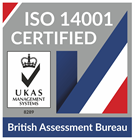Roundtable: saving on ICT expenses
From SaaS to scalability, how can universities keep a tight rein on their ICT expenses, while still offering students the best digital experience available?
PCCW Global Networks (UK) CEO, Paula Benoit answers questions.
This article originally appeared on the University Business website on the 27th April 2019. You can see the original article here.
Q. How important – and how feasible – is it for universities to have a fully scalable ICT framework, capable of growing in capacity to suit demand either over time and/or for specific projects?
It’s vital for universities to have scalable frameworks. Like most businesses, universities want or need to expand their operations to attract more students and make more money.
Feasibility-wise, there are plenty of options when it comes to scalable solutions. By working with the right partners, universities can have the frameworks they require today and for the years to come.
Q. Can you recommend some useful cost-saving solutions?
Operating costs such as heating, lighting and security all provide opportunities for savvy universities to invest in ICT to save over a period of time.
For example, by deploying full-fibre infrastructure you can provide ultrafast internet connectivity for students – but also use the same infrastructure to deploy smart technology to buildings. This can include heating and lighting sensors which can monitor activity within a building or room and adjust temperature and lighting accordingly, resulting in savings when the room is empty.
While there is an initial outlay for the cost of equipment, the infrastructure is already in place, reducing the cost of install. Management and support for these devices can be provided by the connectivity supplier, again reducing the cost by having only one maintenance contract.
Another example would be the monitoring of water temperature. Any building, such as student accommodation, that has shared hot water is required by law to check the temperature periodically to prevent the development of legionella bacteria. This is a time-consuming task, requiring a designated employee or contractor. Technology now exists to allow the temperature to be measured, monitored and reported by inline sensors – saving labour costs and, as alerts can be set should temperatures drop, bringing safety benefits too.
Q. Are there ways in which ICT provision can be monetised (eg offering students different internet capacity/bandwidth at different tariffs)?
Definitely. At PCCW Global we do offer a range of speeds to students across most of our customer sites. Some students are quite happy with the base speed (say, 50Mbps) whereas others who want or need higher bandwidth are happy to pay a small charge to have up to 1Gbps. Depending on the contract, it could be possible to share revenue from this with the university should they wish.
Q. How should universities balance budgets while also future-proofing their ICT? Does more durable always mean more expensive?
There’s often a balance to be struck between the cost of a project and its longevity. However, when it comes to the base infrastructure, the argument for future-proofing is compelling.
If a university is going to go to the cost and trouble of providing a broadband solution to an existing accommodation block, that’s potentially quite disruptive. Running cabling and providing access points will inevitably involve significant work to open up risers, ceilings, drilling holes etc. This sort of work can only be done during a small window when students are not in the building. If you choose to run copper cabling throughout a building, it’s more disruptive to install and ultimately has capacity and speed limitations. Fibre optic cabling is, firstly, far less intrusive to fit, requiring smaller holes and less infrastructure overall – plus it’s good for much higher speeds and additional services in the future.
Q. Should ICT systems be updated on a piecemeal basis, or via more radical overhauls every few years?
I think this depends on the funds available and the institution’s road map for IT provision. Infrastructure is the most critical area here. This forms the basis of the whole system offered, so it needs to be robust and scalable. If the infrastructure is reaching capacity or has limited opportunity to expand, then a radical overhaul is necessary.
This will provide a future-proofed infrastructure that will be good for many years. Items such as terminals, firewalls and other appliances will typically have a life of three to five years, whereas good infrastructure may have a life of 25 or even more.




